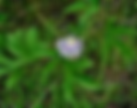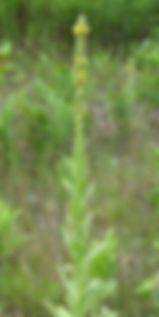
All photography on this site is copyrighted. Our site photographer is Sarah Warmker Photography. The rest of the pictures here were provided by members of Oklahoma Wildcrafting.
This web site is for educational purposes only. We suggest if you choose to eat or use any edible, herb or mushroom on this site that you first consult an expert in this area such as an herbalist, botanist or a mycologist.
Wild Herbs
Medicinal



Bergamont
(Monarada fistulosa L.
Every year you will find me out on the back roads foraging this for the year. In our family we use it for colds. It can be used on wounds. You may want to try the dried leaves as tea. This is used as a edible plant by some using the leaves in salads or as flavoring in cooked foods. Caution on using this plant due to the strong Thymol found in some stands of Bergamont. It has been used as a insect repellent because of the oil.
Description: In Oklahoma wild Bergamont is usually lavender in color, however can be pink to a dark red. It grows to about 3 ft tall. It is in the mint family so you can look for that square stem and opposite leaves.




Goldenrod
(Solidago)
Chewing the leaves can help with a sore throat or a toothache. A strong tea was used by my Grandmother for kidney problems. One of my favorite foraged teas is from fragrant goldenrod.
Description: I could fill half of this page with the descriptions of the goldenrod's found growing here in Oklahoma. Instead I will just list the types and you can do the research. Solidago patula, Solidago erecta, Solidago odora, Solidago canadensis var. gilvocanescens.



Yarrow
(Achillea millefolium)
I infuse yarrow each year in olive oil for medicinal purposes for wounds. Many people use it for colds and the flu. Grandma used it for nose bleeds.
Description: The leaves remind me of feathers, starting large at the bottom and getting smaller as they go up the stalk. The flowers are white and cluster at the top from smaller branches rising from the stalk. They get about a foot in height depending on growing conditions.




Horsemint
(Monarda punctata L.)
Grandma made tea from this for upset stomach and diarrhea. She would use it for the flu and fever.
Description: You can see the lanced shape leaves above, The flower is topped by a small snap dragon type flower. When looking from afar the flower appears lavender. It grows to about 1 1/2 ft. in our area.


Black Walnut
(Juglans Nigra)
I have added this to our herbal page and have done so as we use it here as a anti-parasitic for our flock of chickens, however the leaves have been used to make a skin and eye wash, the bark is astringent and was chewed for toothaches. Use poultice of green hulls for ringworm. Inner bark used as a laxative.




Spiderworts
(Tradescantia ohiensis) (Tradescantia tharpii)
(Tradescantia occidentalis) (Tradescantia ozarkana) (Tradescantia ohiensis)
The stem and leaves can be smashed and rubbed on the skin for insect bites and rashes to help stop itching and burning. These plants have been used as a tea for a laxative. My grandmother used them for our sunburns, much like aloe vera.




Pleurisy Root
(Asclepias tuberosa)
My Grandmother considered this big medicine. I use this for chest colds and asthma and of course pleurisy. I harvest the root for medicinal purposes. Some Native Americans used the roots cooked for food as well as the seed pods. .
Description: Pleurisy Root is a milkweed. You will find it growing in clumps close together many times. The flower is orange to yellow to red. Many times you will find it covered with butterflies. It grows a little over 1 ft in Oklahoma. The leaves are lance shaped and whirl around the stem.




Passionflower
(Passiflora incarnata)
We use this in our home for cramps of all types. It makes a great tea to help with restless sleep. I harvest the flower and leaves for a tea.
Description: One look at this flower and you can not miss it in the wild. The vine grows low along the ground or many times on Oklahoma's back roads up on the fence lines. I have seen fences just covered with it. The stems are mostly smooth and very long trailing along the ground or climbing fences. The leaves are alternate and 3-lobed and about 3 to 5 inches long. Flowers have five white petals. They have a purple corona, however I have found them white a couple of times. They are found between the petals and stamens. The flower is in a ring above the petals and sepals. You will find young fruit and flowers together on the vines and they are long fruiting.




Broomweed
(Amphiachyris dracunculoides (DC.) Nutt.)
This was used by those here for the flue for many years. It is foraged while in bloom and a tea is made. Because of high selium, in high selium soil, caution should be used as it could become toxic. Never use during pregnancy. Never use without a consulting with a herbalist.
Description: The main stalk comes up branching into many branches. The leaves are small and oval. The flowers are a light yellow.




Echinacea
(Echinacea angustifolia)
(Echinacea pallida)
Echinacea pallida, Dig this root and chew on it for a toothache. Echinacea angustifolia, is good to lessen the symptoms of colds. Here in Oklahoma this has been over foraged for commercial use in the past. It is advised not to use this if you have an immune system problem. We have many other abundant wild herbs and today I walk by this to let it grow.
Description: The flowering stock can grow to over two feet. Both types have lanced shape leaves. Drooping petals in shades of lavender to white.




Mullein
(Verbascum thapsus)
This was on of my Grandmothers favorite for all lung problems, tea for the children and Grandmother smoked it. I don't recommend smoking mullein. A infusion of mullein flowers in oil is very antibacterial. This plant has many different herbal uses.
Description: This plant also has a very distinctive feel, a wooly, hairy feeling leaf. I have found it over six feet tall here in Oklahoma.




Plantain
(Plantago major)
(Plantago aristata)
(Plantago elongata Pursh)
(Plantago wrightianaPlantago lanceolata)
This is a medicinal plant that has been used in many ways for many different ailments. Today it is salves that are mostly used for skin problems and wounds. The leaves can be bruised and applied on insect bites and stings.